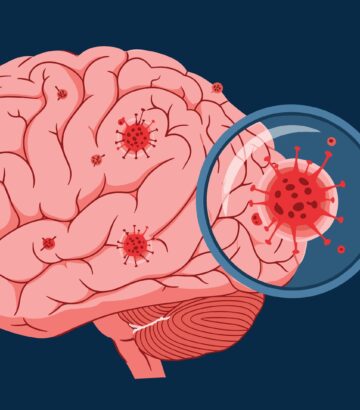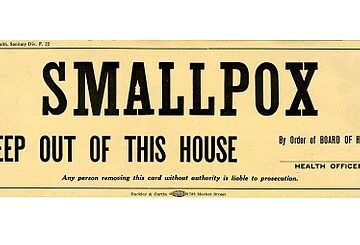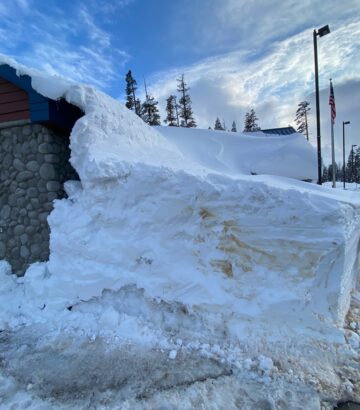Fresh Air Saved Lives in 1918. We Sealed COVID In.
This is the sixth of a series of posts on Long COVID by David Brasure. See parts 1, 2, 3, 4, 5, 7, and 8.
In 1918, doctors did something obvious.
They opened the windows.
They dragged beds outside. Set up tents. Let people breathe.
That’s what saved lives during the deadliest pandemic in modern history.
It wasn’t complicated technology. It wasn’t miracle drugs. It was air.
Simple, free, moving air.
Then we sealed ourselves in.
By 2020, we had a century of science telling us exactly how respiratory viruses spread. We knew the patterns. We had the research. We had better tools, better technology, better everything.
And we still got it wrong.
We told people to lock down inside.
We sealed our windows shut.
We blocked access to beaches and parks.
Then acted bewildered when infection rates soared.
How Nature Healed in 1918
The evidence was crystal clear a century ago. You get infected quicker indoors. You recover slower indoors.
Indoors is where disease thrives.
Doctors in 1918 weren’t fighting misinformation campaigns or pharmaceutical influence. They were watching sailors die and trying what worked.
At Camp Brooks Hospital in Boston, they rolled the sickest patients outside—men who’d been crammed in the stale, airless quarters of naval ships. Death rates plunged from 40 percent to 13 percent. Just changing where people breathed cut mortality by two-thirds.
This wasn’t experimental. It was protocol.
The Massachusetts Surgeon General declared open-air treatment “absolutely proven.” Not recommended. Proven.
Doctors flung open every hospital window. Treated patients in direct sunlight. Let air flow continuously.
And people survived.
Archives show it clearly. Black-and-white photographs of soldiers lying in rows under open sky, bundled in blankets. Nurses in heavy coats providing care without high-tech filters or negative pressure rooms. Just air. Natural air.
It saved lives.
School Without Walls
When the 1918 pandemic threatened schools, officials didn’t waste months fighting about masks or pretending kids couldn’t spread disease.
They didn’t trap children between education and safety.
They moved class outside.
The open-air school movement had begun years earlier to combat tuberculosis. When influenza arrived, they already had the blueprint.
Children learned on ferry decks. On rooftops. In parks. They wore extra layers. They kept gloves on. They continued learning—in clean, flowing air.
No remote learning technology. No HEPA filters. Just fundamental public health logic: studying in cold, circulating air beats sitting in warm, stagnant air.
In 2020, we pretended our only options were unsafe indoor classrooms or isolated screen time. We ignored our own history.
We could have adapted. We could have solved this.
Instead, we argued and divided.
Architecture That Protected Us
We didn’t just understand ventilation. We built for it. Post-1918, architects internalized the lesson: trapped air kills.
So they designed solutions. Radiators were deliberately oversized to heat rooms even with windows wide open. That wasn’t accidental.
When your apartment overheats in January, that’s not poor design. That’s intentional protection.
Your radiator is doing exactly what it was built to do—keep you warm enough to let fresh air in during a pandemic.
These heating systems weren’t about luxury. They were survival mechanisms for open-window living. For air circulation, not air trapping.
Then came the energy crisis. Weather stripping. HVAC systems. We sealed our buildings tight. We prioritized efficiency over health.
When COVID-19 hit, we acted like airflow was some radical new concept.
2020 to Now, Ignoring What Works
We had supercomputers. Advanced engineering. Environmental sensors. We had 100 years of medical literature.
And we still behaved like COVID spread through dark magic.
We sanitized groceries obsessively.
We fought over toilet paper.
We installed flimsy plastic dividers that trapped viral particles like terrariums.
The one basic thing we refused to do?
Open our goddamn windows.
Ventilation was dismissed as unscientific. Outdoor activities were regulated into oblivion.
Meanwhile, classrooms and workplaces turned into virus incubators. No air exchange. No fresh breezes. Just recycled breath.
We told children to eat silently in classrooms with thirty other kids and a single box fan.
We told employees to return to offices with sealed windows and inadequate ventilation.
We normalized danger.
Not because we lacked information.
Because we refused to face reality.
Buildings That Suffocate
Modern construction creates perfect virus chambers.
Sealed to trap heat, block sound, and prevent air movement.
We value energy ratings over human health.
When COVID—a pathogen that floats through air like cigarette smoke—arrived, we locked ourselves inside the perfect delivery system.
Look at where major outbreaks clustered:
Schools.
Care facilities.
Meat plants.
Correctional facilities.
Places where windows don’t open and ventilation is afterthought.
These are our architectural ideals.
Airtight boxes. Recirculated air.
Climate-controlled petri dishes.
Change Is Still Possible
Here’s what nobody wants to acknowledge.
We can still fix this.
You can crack your window right now.
You can meet people in parks instead of packed restaurants.
You can put air purifiers in your living spaces.
We don’t need pharmaceutical salvation.
We need to stop poisoning ourselves with our own exhaled breath.
We could redesign classrooms that don’t spread disease.
We could build workplaces that protect human health.
We could require ventilation ratings on every public building entrance like we do food safety scores.
But that would require admitting our mistakes.
That would mean confronting uncomfortable truths.
And our systems aren’t built to profit from prevention.
Open Air Is Self-Defense
In 1918, they had few alternatives.
They were forced to trust nature.
Now, we have choices. And we consistently choose wrong.
Fresh air isn’t some wellness luxury. It’s not decor. It’s not optional.
It’s the most fundamental intervention that works.
The longer we ignore this reality, the longer COVID will haunt us.
Future pandemics too.
We keep fantasizing about returning to normal.
But our normal is what created this disaster.
Open your windows. Or prepare more graves.
Sources
CDC Museum, “Influenza Pandemic of 1918–1919”: <https://cdc.gov/museum/history/1918-pandemic.html>
British Medical Journal, “The Open-Air Treatment of Influenza,” 1919: <https://ncbi.nlm.nih.gov/pmc/articles/PMC2301113/>
American Journal of Public Health, “Fresh Air, Sunshine and the 1918 Influenza Pandemic,” 2009: <https://ajph.aphapublications.org/doi/10.2105/AJPH.2008.133546>
Massachusetts Historical Society, “Camp Brooks Open Air Hospital and the Lessons of 1918”: <https://masshist.org>
The Lancet Respiratory Medicine, “Ventilation and the SARS-CoV-2 Coronavirus: A Review,” 2021: <https://thelancet.com/journals/lanres/article/PIIS2213-2600(21)00268-9/fulltext>
The New York Times, “Why Is It So Hot in My Apartment?”: <https://nytimes.com/2020/12/22/realestate/radiator-heat-apartment.html>
Bloomberg CityLab, “NYC Radiators Were Designed to Work With the Windows Open”: <https://bloomberg.com/news/articles/2020-11-25/nyc-radiators-are-hot-by-design-here-s-why>
Smithsonian Magazine, “Open-Air Schools in the Early 20th Century”: <https://smithsonianmag.com/history/how-open-air-schools-tried-to-prevent-tuberculosis-180974396>/












